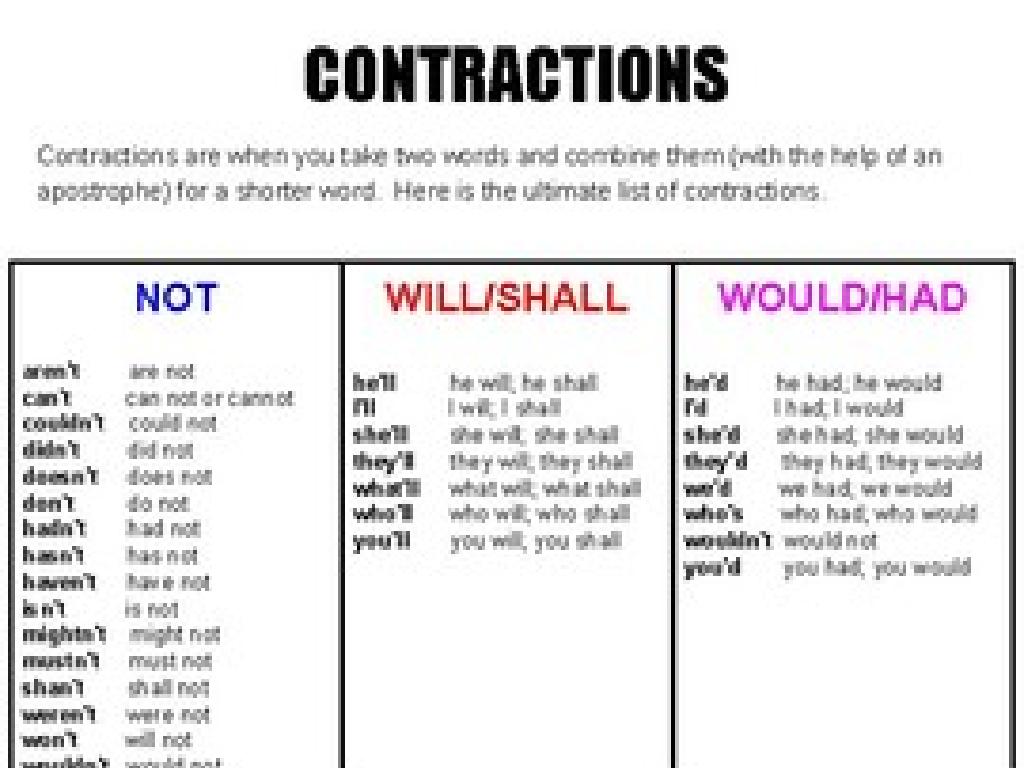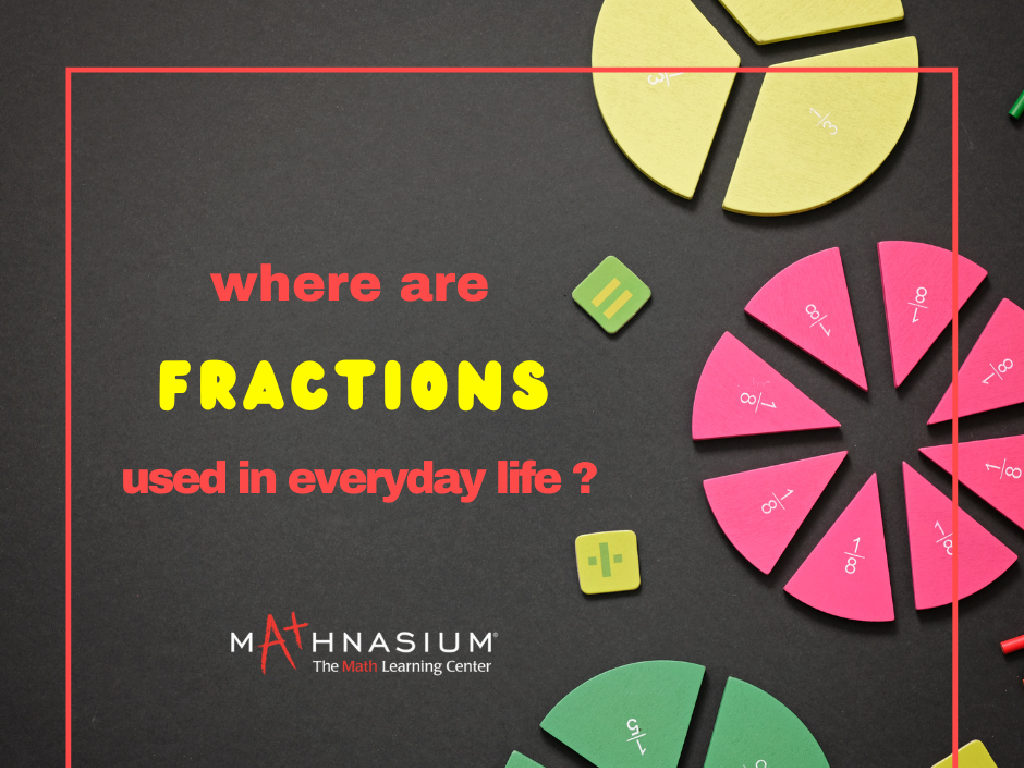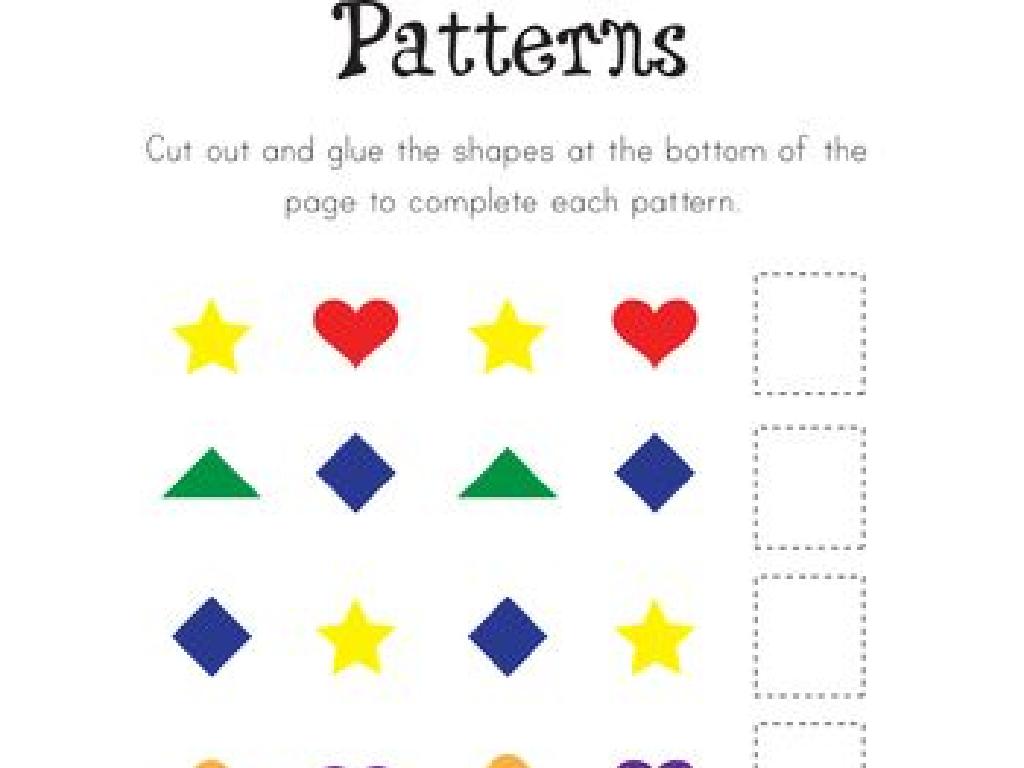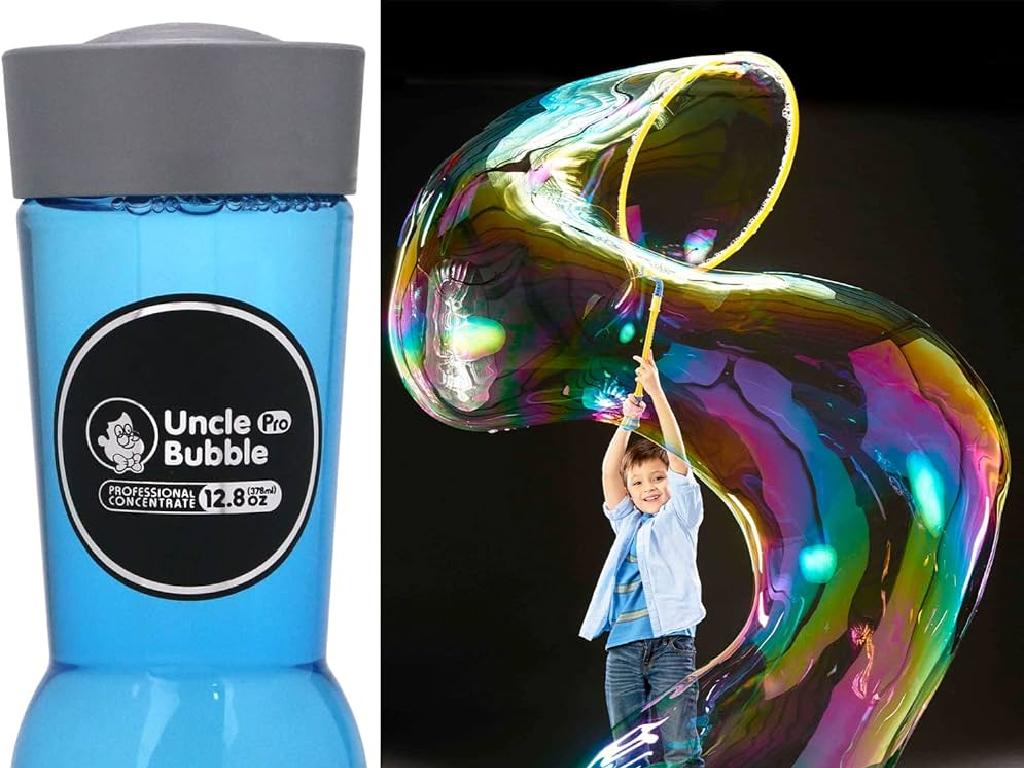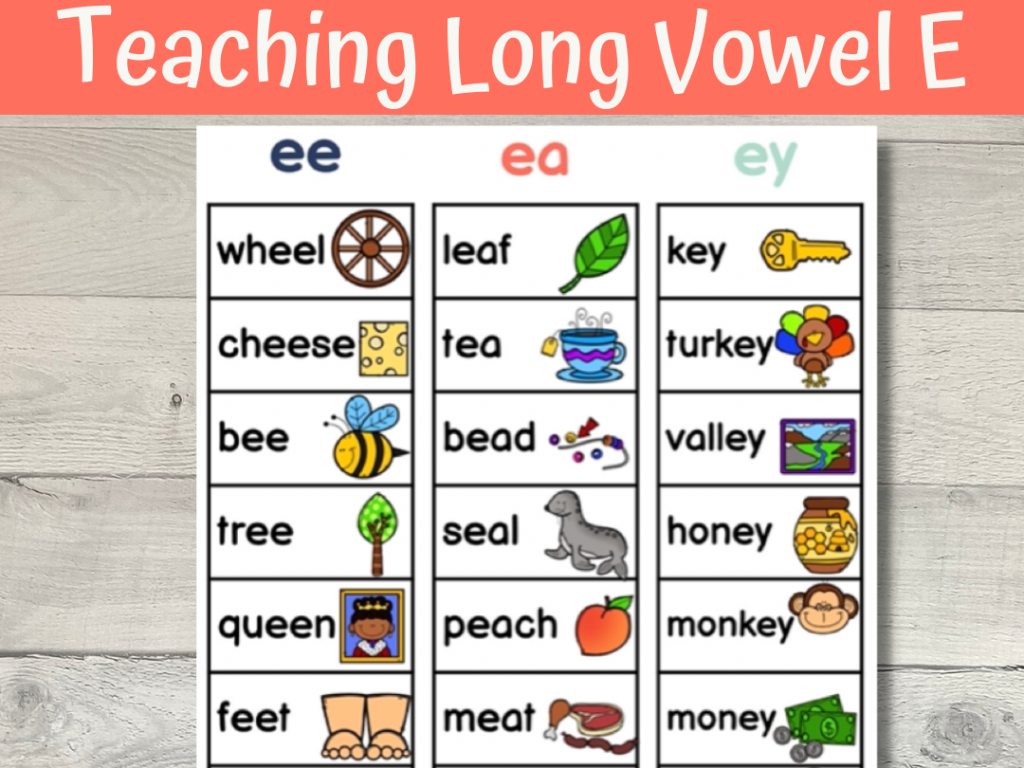Choose The Singular Or Plural Noun That Matches The Picture
Subject: Language arts
Grade: Kindergarten
Topic: Nouns
Please LOG IN to download the presentation. Access is available to registered users only.
View More Content
Welcome to Nouns!
– Greet our Super Learners
– Today’s focus: Learning about Nouns
– Nouns: Words for people, places, things
– Examples: ‘teacher’ (person), ‘school’ (place), ‘ball’ (thing)
– Nouns can also name ideas
– ‘Freedom’ and ‘happiness’ are nouns for ideas
|
This slide is designed to introduce Kindergarten students to the concept of nouns in a fun and engaging way. Start by greeting the students enthusiastically to capture their attention. Explain that nouns are special words used to name people, like a ‘mom’ or ‘teacher’; places, like ‘home’ or ‘park’; things, like ‘toy’ or ‘apple’; and even ideas, like ‘love’ or ‘dreams’. Use props or pictures to illustrate examples of each type of noun. Encourage the children to think of their own examples and share them with the class. The goal is to ensure that students can recognize nouns in their environment and understand that nouns are a fundamental part of language.
Singular and Plural Nouns
– Singular nouns: only one
– Plural nouns: more than one
– Examples with pictures
– e.g., ‘cat’ for one, ‘cats’ for many
– Practice identifying nouns
– We’ll match nouns to pictures together
|
This slide introduces the concept of singular and plural nouns to Kindergarten students. Begin by explaining that singular nouns refer to one single item, while plural nouns are used when there are more than one. Use visual aids like pictures to help students understand the difference. For example, show a picture of one cat followed by a picture of several cats and explain how ‘cat’ becomes ‘cats’ with the addition of ‘s’ to indicate more than one. Engage the students with practice exercises where they identify and match singular and plural nouns to corresponding pictures. This interactive approach will help solidify their understanding of the concept.
Matching Game: Singular or Plural?
– Look at the picture carefully
– Is it one thing? Say ‘singular’
– ‘Singular’ means only one
– Are there many things? Say ‘plural’
– ‘Plural’ means more than one
– Practice makes perfect!
|
This slide is for a classroom activity designed to help Kindergarten students understand the concept of singular and plural nouns through a fun matching game. Show a series of pictures to the class and ask them to identify whether the noun represented is singular or plural. Reinforce the concept that ‘singular’ refers to a single item and ‘plural’ refers to more than one item. Encourage the students to speak out loud their answers to enhance their learning experience. As they participate, provide positive feedback and correct any misunderstandings. This interactive approach helps students to grasp the difference between singular and plural nouns in a memorable way.
Singular or Plural: One Cat
– Observe the picture: One cat
– Is it one cat or many cats?
– If there’s only one, it’s singular
– Correct! It’s singular
– ‘Cat’ is a singular noun
– Singular means just one
|
This slide is aimed at helping Kindergarten students understand the concept of singular and plural nouns through visual representation. Show them a picture of one cat and ask them to observe how many cats are there. Guide them to answer whether the noun ‘cat’ should be singular or plural in this context. Affirm the correct answer, which is ‘singular’ because there is only one cat in the picture. Reinforce the concept that singular means one, and plural means more than one. Encourage the students to apply this knowledge by looking at other pictures and deciding if the nouns should be singular or plural.
Singular or Plural? Let’s Learn!
– Observe the picture: Many Cats
– Is it one cat or more than one?
– Singular means one, plural means more
– Correct, it’s more than one!
– Plural means more than one cat
– ‘Cats’ means plural, not just one!
– Singular: cat, Plural: cats
|
This slide is designed to help Kindergarten students understand the concept of singular and plural nouns through visual aid. Show them a picture with multiple cats and ask them to observe carefully. Guide them to recognize whether the picture represents a single cat or multiple cats. Reinforce the concept that ‘singular’ refers to one, while ‘plural’ refers to more than one. Use the example ‘cats’ to illustrate a plural noun. Encourage the students to say the word ‘cats’ out loud and explain that adding ‘s’ often means more than one. Plan to have additional pictures ready for practice, and consider bringing in toy cats or using hand gestures to show one versus many.
Let’s Practice Nouns!
– Look at each picture carefully
– Decide if the noun is singular or plural
– Is there one item or more than one?
– Shout out ‘Singular’ or ‘Plural’
– Use your loud, proud voice to answer
– Get ready for fun practice!
|
This slide is for an interactive class activity designed to help Kindergarten students understand the concept of singular and plural nouns. Show pictures of easily recognizable items, one at a time, and ask the students to identify whether the noun that represents the item should be singular or plural. For example, show a picture of a single apple for ‘singular’ and several apples for ‘plural’. Encourage the children to observe the quantity in the picture before shouting out their answers. This activity will help reinforce their understanding of number concepts in nouns and provide a fun way to practice their speaking skills. Be prepared with a list of common items that the children are familiar with and ensure that the pictures are clear and easily distinguishable.
Class Activity: Noun Hunt
– Find one thing (singular noun)
– Find many things (plural noun)
– Draw or write your findings
Use crayons or pencils for drawing, or write the word on paper
– Share with the class
Tell us about your singular and plural nouns
|
This activity is designed to help Kindergarten students understand the concept of singular and plural nouns through a fun and interactive ‘Noun Hunt’ in the classroom. Encourage the students to look around the classroom and identify one object (singular noun) and a group of objects (plural noun). Provide them with drawing materials or paper to either draw or write down what they find. Once everyone has completed the task, have a sharing session where each student presents their singular and plural nouns to the class. This will reinforce their understanding of the concept and allow them to learn from each other’s findings. Possible singular nouns could be ‘desk’, ‘chair’, ‘book’, while plural nouns could be ‘crayons’, ‘blocks’, ‘papers’. Make sure to assist students who may need help with writing or drawing.
Show and Tell: Noun Hunt Adventure
– Share your Noun Hunt finds
– Explain why it’s singular or plural
– Did the picture show one thing or many?
– Praise for great noun exploring
– Looking forward to your stories
|
This slide is for a class activity where students will present the nouns they found during their ‘Noun Hunt’. They will explain whether the noun is singular or plural based on the number of items in their picture. Encourage the children to articulate their thoughts on why they chose singular or plural, reinforcing the concept of quantity in nouns. Praise their efforts to foster a positive learning environment. Prepare to listen to their stories and provide gentle guidance if they struggle with the concept. For the teacher: Have a list of guiding questions ready to help students if they are unsure, such as ‘How many are there?’ or ‘Is there one or more than one?’
Review and Goodbye, Super Learners!
– What are nouns?
Nouns are names of people, places, things, or ideas.
– Share a singular noun
A singular noun means just one, like ‘dog’ or ‘ball’.
– Share a plural noun
A plural noun means more than one, like ‘dogs’ or ‘balls’.
– Great job today!
|
As we wrap up today’s lesson, let’s review what we’ve learned about nouns. Start by asking the class what nouns are to reinforce their understanding. Then, engage the students by asking them to provide examples of singular nouns, which refer to one object, and plural nouns, which refer to more than one. Praise their efforts and participation throughout the lesson, emphasizing how well they’ve done. End the class on a positive note, calling them ‘Super Learners’ to boost their confidence and looking forward to the next lesson.

